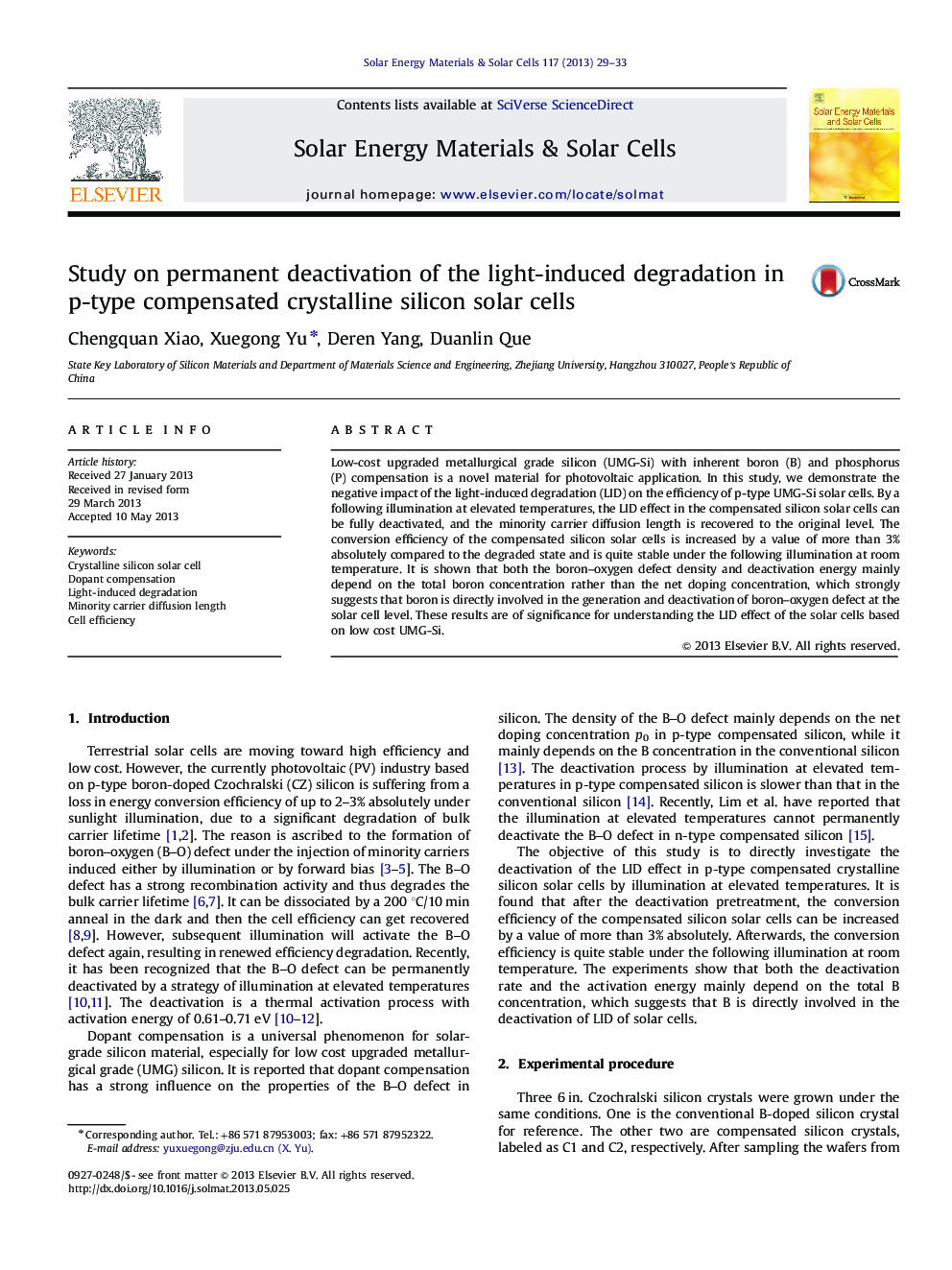| Article ID | Journal | Published Year | Pages | File Type |
|---|---|---|---|---|
| 6536078 | Solar Energy Materials and Solar Cells | 2013 | 5 Pages |
Abstract
Low-cost upgraded metallurgical grade silicon (UMG-Si) with inherent boron (B) and phosphorus (P) compensation is a novel material for photovoltaic application. In this study, we demonstrate the negative impact of the light-induced degradation (LID) on the efficiency of p-type UMG-Si solar cells. By a following illumination at elevated temperatures, the LID effect in the compensated silicon solar cells can be fully deactivated, and the minority carrier diffusion length is recovered to the original level. The conversion efficiency of the compensated silicon solar cells is increased by a value of more than 3% absolutely compared to the degraded state and is quite stable under the following illumination at room temperature. It is shown that both the boron-oxygen defect density and deactivation energy mainly depend on the total boron concentration rather than the net doping concentration, which strongly suggests that boron is directly involved in the generation and deactivation of boron-oxygen defect at the solar cell level. These results are of significance for understanding the LID effect of the solar cells based on low cost UMG-Si.
Keywords
Related Topics
Physical Sciences and Engineering
Chemical Engineering
Catalysis
Authors
Chengquan Xiao, Xuegong Yu, Deren Yang, Duanlin Que,
